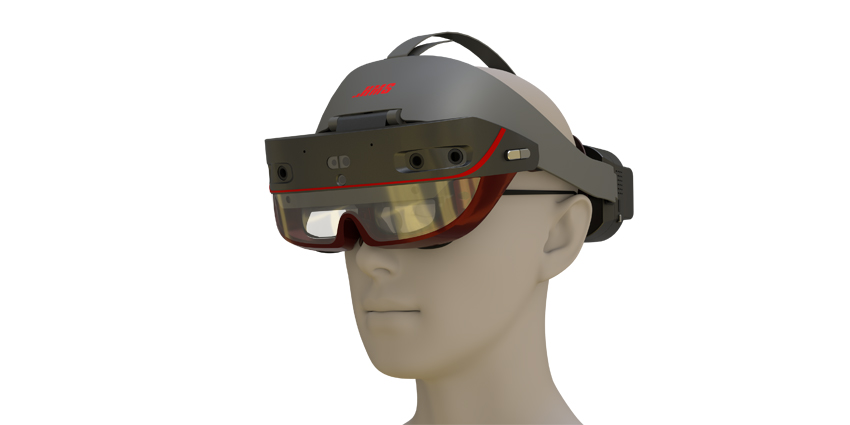The rise of augmented reality (AR) educational technologies (EduTech) in classroom settings has proven the benefits of deploying solutions aimed at enhancing the learning experiences of many young children.
XR Today spoke with Gaurav Wadhwa, Founder of Gamooz, an augmented reality (AR) book platform where publishers can add interactive content for readers to learn numerous skills and subjects.
Gamooz: Augmented Learning
Mr Wadhwa explained Gamooz supported 70 types of templates, allowing publishers to map activities on pages in a book with numerous subjects like science, physics, chemistry, maths, and others.
Children could use the storybooks for simple activities and drawing, and included instructions on downloading the Gamooz mobile app on Google Play and Apple’s App Store.
He continued, stating how parents could download the app, and use their smartphone’s AR camera to scan pages in a book, triggering interactive content such as audio, video, and other animated stories.
Mr Wadhwa explained how learners aged three could study books using the AR app, stating:
“The child now understands the story as if it was a colouring activity, and you just find the apple on the page the child needs to colour. The child just points the camera, and now the same apple sketch appears on the phone with the colour palette, and the child can colour”
The AR-powered app could also trigger interactive content such as quizzes, colouring activities, alphabet exercises, animated videos, fill-in-the-blank, matching, spelling, true-false, sequencing, connect the dots, and crosswords, among others, he said, adding:
“The publisher prints the instructions, on the front and back, to download and use the app, so the parent can then help their children to use it [and] have a lot of fun using our platform”
The Start of a New AR Venture
Speaking on his motivation for creating the platform, Gaurav Wadhwa formed Gamooz in 2012, which was initially an AR app development company.
He founded the company after leaving his previous job as a software developer due to his interest in AR technologies, but began developing his knowledge of products in the market.
Wadhwa began designing AR apps for advertising and marketing agencies, newspapers, magazines, restaurants, furniture retailers and others, and from 2012 to 2015, created roughly 200 mobile apps for global firms such as Ford Motors in India, Suzuki, the Hindustan Times, and Saudi Telecom Lebanon.
His motivation to create the firm was to “leave a mark” on the world and improve lives with his new business venture, despite earning as an app maker.
Mr Wadhwa met the CEO of his first book publisher, who was unhappy with the compact disks included with his children’s books as computer manufacturers were slowly phasing out the medium.
Speaking about the publishers shift to AR, he explained further:
“He said, ‘Why not create an augmented reality app, which opens the camera which you can point towards the book, and it plays this animated video?” They already had this video in the CD […] Basically, I created AR apps for this publisher, for around 36 books, and the feedback from the market was amazing.
Schools, teachers, parents, and children offered positive feedback on the AR app, which surprised Mr Wadhwa as he had not considered designing apps for children.
Such apps were “solving a big problem” by attracting children to books and learning, which sparked his career pivot. A subsequent visit to a World Book Fair in New Delhi led to further partnerships with book publishers and later, a deal with Oxford University Press in India, who adopted his AR apps.
To date, Gamooz has developed apps for 46 clients, over 2500 books with roughly 80,000 interactive pages, and continues to improve its platform. Consumers also do not pay extra for AR technologies for each book, but publishers paid a rate per page for augmented content.
AR Learning vs Typical Instruction Models
When asked about the benefits of using AR-powered books compared to traditional instructional methods, he stated the interactive nature of AR allowed greater precision when teaching children.
India’s massive population and school system, where many teachers received relative levels of training and qualification, could receive more standardised teaching curricula with AR materials, he said, citing the differences in learning English pronunciation across India’s diverse landscapes.
Gamooz used “curated content” approved and created by publishers to instruct learners, he explained, adding:
“Once it comes to our platform, it becomes very easily accessible to [learners]. Normally, the big edtech companies in the market sell content, for which you have to pay 1000s of pounds, 1000s of dollars, to access, and you have to pay every year. But in our case, this content is available to the children for free, and the parents only need to buy the book”
Activities supported grades Kindergarten to 12, or 3-17 years, and augmented reality activites targeted skill sets such as speaking, counting, pen control, fine motor, problem solving, and others.
Gamooz and AR Technologies
Speaking on the origins of his company’s technologies, Mr Wadhwa began creating real-time 3D apps for animations and AR clothing, which animated designs on t-shirts.
His firm began focusing on scaleable solutions via his interactive books’ platform, where customers could order a number of pages for each book with a 2D rather than 3D approach.
Gamooz also concluded it would focus on a more accessible native AR platform, which reduced the cost of AR content for publishers compared with more complex platforms such as Unity or Unreal Engine.
He explained further, stating,
“We wanted to create a solution where we could make 1000s of pages interactive, rather than just maybe 10 pages interactive, or just one marketing activity. Now, we want to make every page interactive”
The business model successfully allowed greater access to global markets by creating “one of the cheapest platforms in the world for publishers” to make AR publishing content.
Gamooz also decided to create a native image recognition software developer kit (SDK) along with its platform, despite not having prior knowledge of such technologies or developers, to reduce dependence on third-party suppliers and lower licencing fees.
He said,
“I sat with my developer and we spent all day and night figuring out the technology, and within three to four months, we had a prototype running. We finally created our own image recognition SDK, which we use in our apps right now.”
Gamooz had coded its image recognition SDK using Android Studio with Java, as well as Swift and Objective C to develop the iOS app. The bespoke platform includes a native backend system, using the PHP framework Code Ignitor.
Challenges and Opportunities in AR Learning
Wadhwa had developed a client base for an initial two years, which included schools and publishers in India. Some institutions were reluctant to adopt the technology as some parents and educators were concerned about their children using phones and tablets in classrooms.
Despite initial reluctance to adopt smart devices in the classroom, one situation — the COVID-19 pandemic — changed the landscape of education, he explained, stating:
“After the COVID situation, people are now looking for these digital solutions, the digital education content, and they are running behind this. I mean, they want to add as much digital content as possible in their curriculum the schools wanted, the publishers also wanted, and it is actually good, because now children are at home”
He added children were still studying at home due to COVID-19 and used mobile phones and tablets to help learn their curriculum.
Platforms like Gamooz were allowing children to learn unsupervised by parents, who had to return to work as lockdowns eased, and continuously study on their own, Wadhwa said.
He concluded:
“Once they use our app, they forget that they are actually studying. They think they are playing a game. So that’s where our company name lies: Gamooz is like gamifying education, which makes the books more interesting and less boring for them. And I think these new AR tech companies are trying to do that, which is good for the future of education”
Success stories such as Gamooz come amid numerous studies on the impact of AR learning technologies, where a Lenovo survey found 54 percent of teachers and 41 percent of parents preferred a greater presence of virtual and augmented reality solutions in the classroom.
The study, which surveyed 500 teachers and 2,000 parents, also revealed 70 percent of teachers and parents found children had gained vital professional skills due to remote learning during the pandemic.
For more information on Gamooz, its products, and technologies, kindly visit their website.







